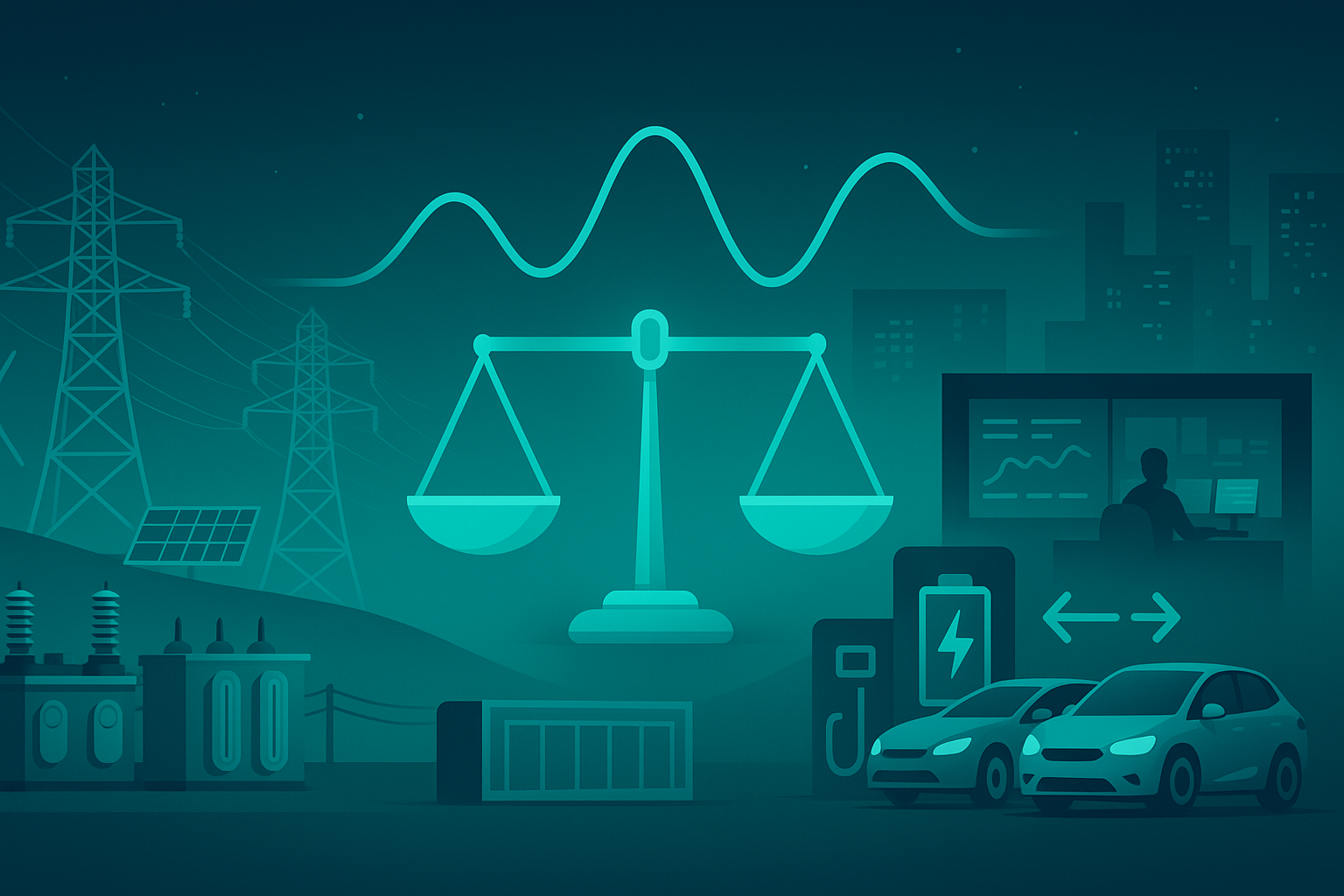Load Balancing in Power Grids

What is Load Balancing?
Load balancing in power systems refers to the real-time coordination of electricity generation and consumption to maintain grid stability. It ensures that supply equals demand at all times, minimizing blackouts, frequency deviations, and energy waste.
As the grid integrates more renewable sources (like solar and wind) and electrified loads (like EVs), load balancing has become critical for modern, intelligent energy systems.
Why It Matters
- Grid Stability: Prevents under- or over-voltage conditions and frequency shifts
- Reliability: Avoids outages by balancing power across regions and time zones
- Efficiency: Reduces energy curtailment and improves asset utilization
- Cost Optimization: Minimizes use of expensive peaker plants and grid losses
How It Works
Core Techniques:
- Frequency Regulation: Adjusting generator outputs to maintain 50/60 Hz
- Demand Response: Encouraging consumers to shift usage to off-peak times
- Energy Storage Integration: Using batteries or pumped hydro to store excess energy
- Load Shedding: Controlled blackouts of non-critical loads during emergencies
Tools and Technologies:
- Smart Grids: Use IoT and AI to automate balancing across diverse sources
- Microgrids: Balance loads locally and interface flexibly with the main grid
- Virtual Power Plants (VPPs): Aggregate distributed energy resources (DERs)
- Dynamic Tariffs: Influence consumer behavior via real-time pricing
Load Balancing with EVs
Electric Vehicles are both a challenge and an opportunity for grid balancing:
- Smart Charging: Shifts charging to off-peak hours via algorithms or apps
- Vehicle-to-Grid (V2G): EVs can discharge power back to the grid during demand peaks
- Charging Hubs: Managed via intelligent switch matrices and load management systems
Use Cases
- Renewable Energy Integration: Smooths solar/wind intermittency
- EV Charging Stations: Manages simultaneous multi-vehicle charging
- Industrial Parks: Balances machinery loads with on-site solar/battery backup
- Smart Cities: Coordinates lighting, HVAC, EVs, and storage in real-time
Benefits
- Scalability: Supports large-scale renewable integration
- Resilience: Adapts to demand spikes and generation drops
- Lower Emissions: Reduces dependency on fossil-based peaker plants
⚖️ Callout: Load balancing is the secret sauce of a reliable power grid — ensuring energy is delivered where it’s needed, when it’s needed, without overloading the system or wasting generation.



